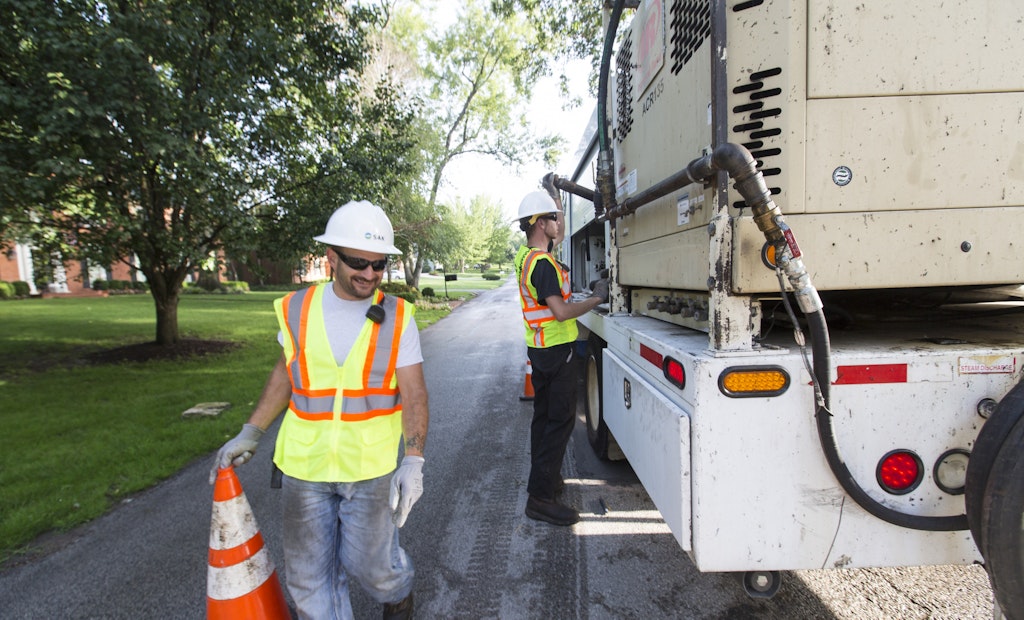
SAK Construction has its entire fleet outfitted with GPS. It helps the company dispatch equipment to job sites more effectively and also is used to track other variables related to efficiency.
Interested in Cleaning?
Get Cleaning articles, news and videos right in your inbox! Sign up now.
Cleaning + Get AlertsTechnology and efficiency go hand in hand. It means making an initial investment, but quickly recouping that through the improvements the technology makes in a company’s operations.
Pipe rehab contractor SAK Construction in O’Fallon, Missouri, has heavily relied on GPS to improve its efficiency. The company once reserved GPS for only its larger pieces of equipment, but as the cost of the technology decreased, the company got to the point where its entire fleet was outfitted with GPS. Because of GPS, SAK Construction is able to schedule jobs more efficiently, dispatching equipment to the next job based on its current location. Through GPS, the company can also track a number of other variables that relate to efficiency — everything from the operating hours and miles on a vehicle to employees’ driving habits and fuel consumption, which helps reduce truck-idling time.
For example, by knowing how many hours a piece of equipment runs per month, SAK Construction can make more informed decisions about whether to rent or purchase that kind of equipment in the future, says Steve Hirtz, the company’s vice president of operations.
“You can’t afford to have other contractors pass you by. In this industry, you either pay attention to what’s going on or get left behind,” Hirtz says. “Staying abreast of new technology plays a key role in our ability to grow.”
A key technology upgrade for Jim Dandy Sewer & Plumbing of Seattle was the use of tablets in the field that have been outfitted with Smart Service software. One of the benefits was real-time communication between the office and the field.
“Now, I can have a less experienced plumber on a job site who can use the iPad’s FaceTime function to call in to the office, literally show the situation (through the onboard camera with video), and be talked through the whole job (by a more experienced technician),” says owner Scott Spencer. “They can also take still photos of the job site and tag them to an invoice. This can protect us from things such as being accused of, say, water damage or scratching a tub when the damage was actually pre-existing.”
The switch to the tablet-based system eliminated redundant data entry, so it also allowed Spencer to move a full-time person to a function he’d long wanted to institute: time-responsive, quality-assurance follow-up calls.
“Now, I’m not waiting a week for the invoice to come in, but instead doing those calls within 24 hours,” he says. “We know when the guy has logged off the job because the color (of that job’s entry) changes on screen. We’re actually trying to get it down to an hour after the service call so we can get the best customer feedback.”
O’Connor Plumbing & Heating in Germantown, Maryland, also moved toward using iPads in the field. The ability to generate a digital job ticket on site that is then immediately emailed to the main office was a key operational benefit.
“We dispatch guys straight from home, so before we started using iPads, it was a headache to get paperwork turned in,” says Kevin Walker, drain division manager.
Another benefit related to better efficiency? Lower employee turnover. Technicians love to work with new high-tech equipment that makes their jobs easier and more rewarding, Walker says.
What types of technology — or other methods — have you implemented to improve efficiencies in your company? Comment below or email kyle.rogers@colepublishing.com.





